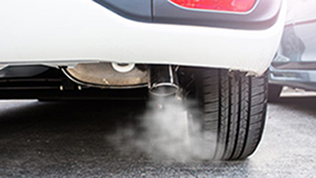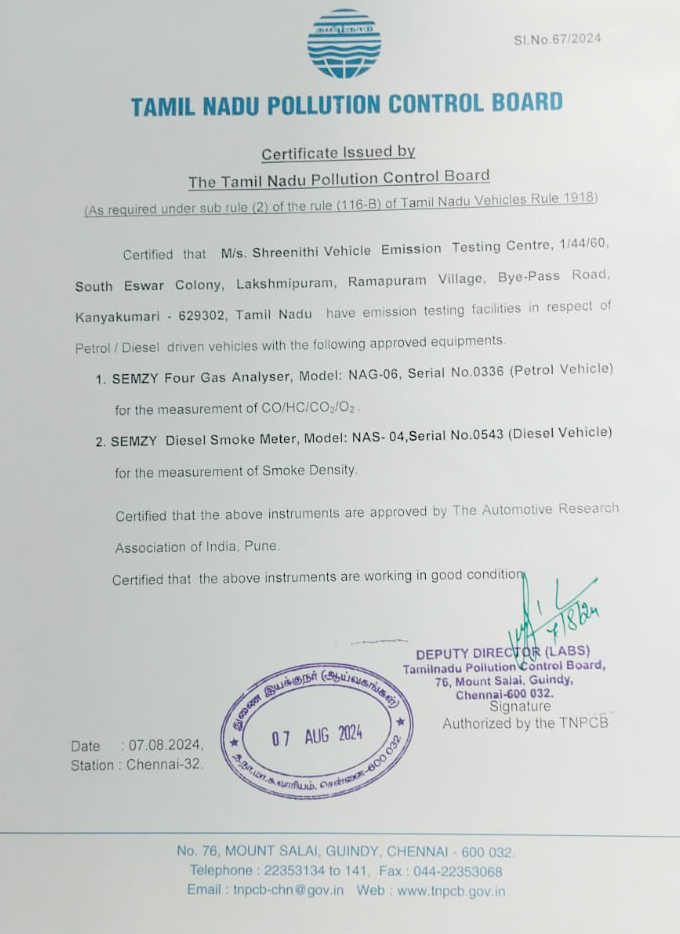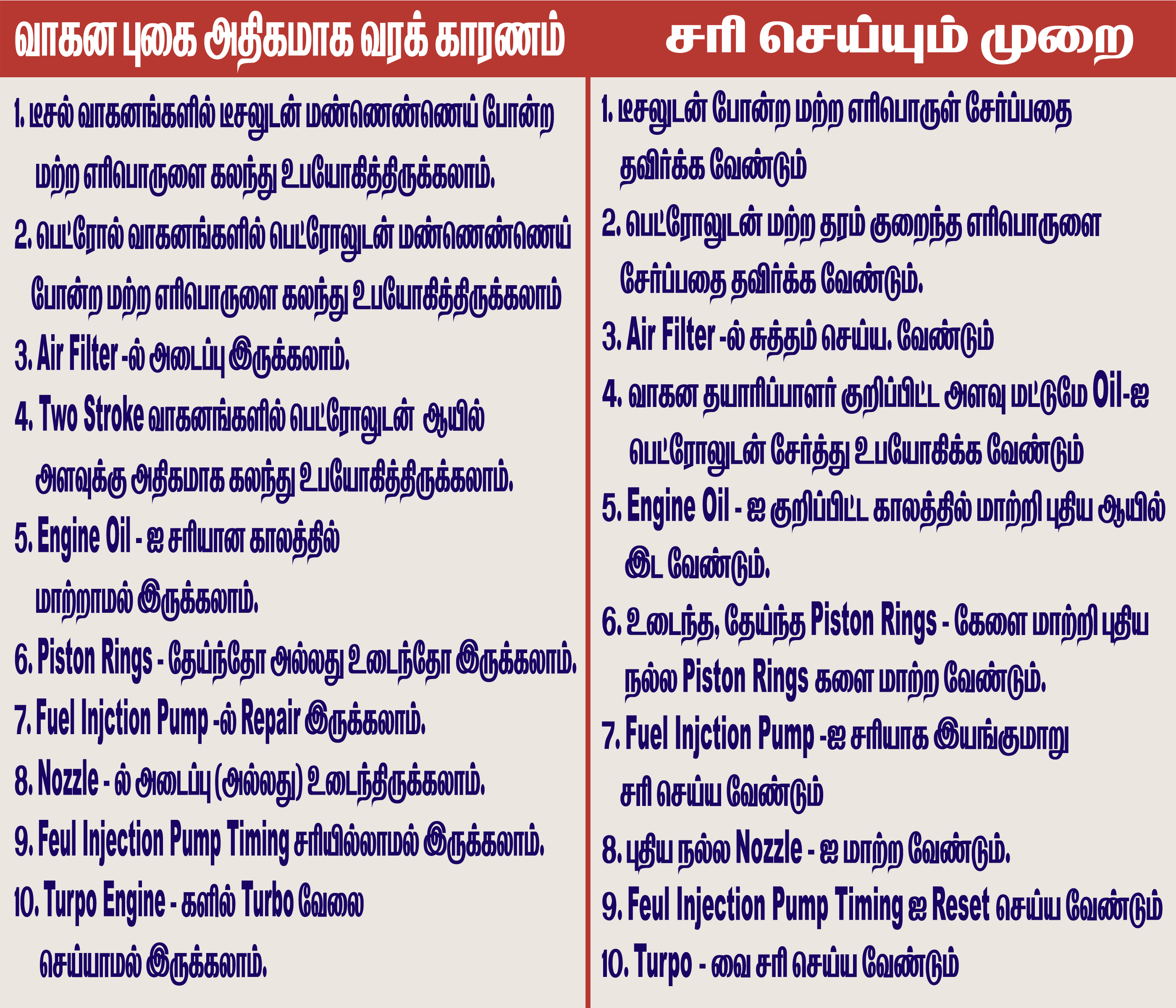- 9865750077
- 09:30 am – 06:00 pm
At Shreenithi Emission Testing Centre, we are dedicated to a cleaner, greener environment by offering accurate vehicle emission testing. Our center, equipped with advanced technology and skilled professionals, ensures every vehicle meets environmental standards. We're not just about compliance; we're committed to making a positive impact. Let's drive towards a cleaner tomorrow together.
Petrol vehicles: Tested every 6 months to ensure emissions remain within safe limits.
Diesel vehicles: Tested every 3 months to control higher emission levels effectively.
Commercial vehicles (E.g., Trucks, Buses): Tested every 3 months due to continuous use and higher emissions.
Emissions (CO, HC, NOx, etc.)
Smoke opacity (for diesel vehicles)
Vehicle age and condition
Two-wheeler: ₹50-₹100
Four-wheeler: ₹100-₹200
Commercial vehicle: ₹200-₹500
Look for centers with a "PUC Testing Center" sign
Check the TNPCB website for a list of authorized centers
Ensure the center has the necessary equipment and trained personnel
First-time offenders: ₹1,000 fine
Repeat offenders: ₹5,000-₹10,000 fine
Vehicle registration suspension
Insurance claims may be rejected

Visit an authorized testing center
Provide required documents (RC, insurance, etc.)
Get your vehicle tested
Receive a new PUC certificate if your vehicle passes
Valid for 6 months (petrol vehicles) or 3 months (diesel/commercial vehicles)
Must be renewed before expiration to avoid penalties
| Vehicle Type | Test Type | Description |
|---|---|---|
| Petrol Vehicles | CO Test | Measures CO emissions for proper fuel combustion |
| Diesel Vehicles | Smoke Density Test | Measures black smoke emissions for fuel combustion efficiency |
| CNG/LPG Vehicles | HC Test | Measures unburnt hydrocarbons to check fuel combustion |
| All Vehicles | CO2 Test | Measures CO2 emissions to assess environmental impact |
Pre-Test Inspection: A quick check of the vehicle’s exhaust system is conducted to ensure there are no visible damages or leaks that could affect the accuracy of the emission test.
Connecting Testing Equipment: The vehicle’s exhaust is connected to an emission testing machine that measures pollutants such as carbon monoxide (CO), hydrocarbons (HC), and nitrogen oxides (NOx).
Engine Running Test: The engine is run at different speeds (idle and accelerated) to analyze emissions under various operating conditions.
Data Recording: The machine records the emission levels and compares them with government-specified limits for the vehicle category and fuel type.
Certificate Issuance: If the vehicle passes, an emission certificate is issued, confirming compliance with the legal emission limits. In case of failure, the vehicle owner is advised on necessary repairs before retesting.

